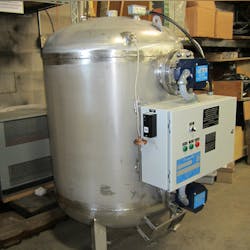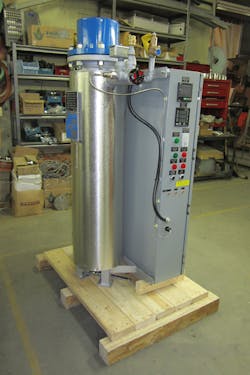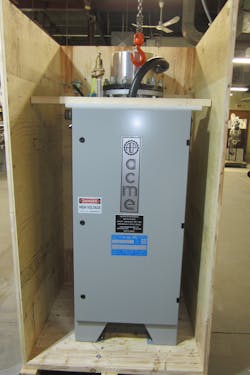Switching to Eco-Friendly Electric Boilers? What to Consider
To address climate change, states and cities are increasingly phasing out fossil fuel use in commercial buildings in favor of clean, green electric options.
Today, a common goal is the conversion of aging buildings to accommodate eco-friendly electric boilers that provide hot water to tenants. In fact, the State of New Jersey’s Department of Environmental Protection recently proposed a rule that would require thousands of apartment buildings, schools, and government buildings to replace heating systems with electric boilers.
Switching to electric boilers promotes better health, as well.
Besides the notorious greenhouse gases, carbon dioxide (CO2) and methane (CH4), natural gas-fired boilers and furnaces emit dangerous nitrogen oxides (NOx), carbon monoxide (CO), and nitrous oxide (N2O), as well as volatile organic compounds (VOCs), sulfur dioxide (SO2), and particulate matter (PM).
When upgrading to commercial electric boilers in space-constrained urban areas, however, there are several important issues to consider before commercial property managers and the buildings’ boards of directors can decide on the simplest, most cost-effective option for any retrofit project.
“Among the challenges are the facts that every building to be retrofitted is different, managers often lack mechanical or heating system experience, and engineers can be unfamiliar with electric boiler design. Because of this, many need expert guidance on how to proceed with the conversion from gas-fired to electric, including the basic requirements and other factors to consider,” says Robert Presser, Vice President of Acme Engineering, a Canadian manufacturer of commercial and industrial electric boilers with over 60 years of experience.
In Presser’s view, the key issues to evaluate include power availability and access, fitting the boiler(s) in the building, reducing the total cost of installation, and maximizing system reliability and longevity. Consulting with a professional with deep expertise in electric boiler technology, infrastructure, and conversion will streamline the process and facilitate optimal results, he says.
Power Availability and Access
“In any conversion to electric boilers, the first step for property managers or boards of directors is to call their power company and ask, ‘Are you able to give us the power we need?’ You will need access to hundreds, if not thousands, of amps. Without it, the project cannot proceed,” says Presser, adding that most buildings only have access to 480V, three-phase electrical power.
Building managers also need to consider the added cost for the utility to upgrade their power to the building. Additional electrical infrastructure enhancements may be required as well, such as wiring and upgraded circuit breakers.
Reducing the Cost of Conversion
In the conversion, physically moving and manipulating a large electric boiler through doors and narrow corridors during installation can be extremely difficult – even impossible – particularly in older, space-constrained buildings.
“Getting the boiler through doors into the building can be a challenge when a typical doorway in an older building is only 30-in. wide, or less. You’ll need to manipulate the boiler into the building and probably fit it into a small elevator to move it to the basement or a service room,” says Presser.
Another problem is the difficulty of removing the existing boiler, which usually is quite large. Because of this, it is common to leave the existing boiler in place, which places further space constraints on the size of the new electric boiler system to be installed.
“If the building is older, you may have a very large cast iron, gas or oil-fired unit that is cost prohibitive to break down and remove,” says Presser.
He adds that, “Many property managers also decline to install a larger boiler because they do not want to break a wall or dig a hole and lower the unit to the basement. Try getting a permit for that in New York City,” says Presser.
Presser advises an easier, more cost-effective solution. “Instead of trying to get one big boiler into the building, it is often much easier to move in several smaller boilers and then install and interconnect them where there is space available,” he says.
In this regard, property managers are finding a more effective solution in high-capacity electric boilers that are specifically designed to fit through doors and other space-constrained areas.
As an example, Acme’s Slim Series units are designed to produce ample hot water while easing conversion and installation with an ability to “squeeze through” narrow passageways and fit into smaller spaces without costly demolition.
The Slim Series electric boiler technology draws on the company’s 40 years of experience in electric heating, temperature control, and manufacture of large integrated units to maximize hot water output in a compact form. Boilers with one pressure vessel tube can deliver 45-180 kW and those with two pressure vessel tubes can provide 225-360 kW.
“With 24-in. widths, the systems are specifically built narrow so they can pass through existing 26-in. doors or corridors, and require minimal floor space. The compact units can fit into service elevators for easy access to the building’s basement,” says Presser.
He notes that the systems’ piping and panels are configured to integrate with existing equipment rooms, to reduce installation costs. In addition, advanced controls are designed to extract the maximum energy from the available electric power.
Optimizing Reliability and Lifespan
Since building tenants rely on the electric boilers for hot water daily, investing a little more in the initial purchase can pay off dramatically in increased long-term reliability and longevity.
While there are some smaller, commercial boilers in the market that will typically last from 5 to 10 years before replacement is required, Acme’s electric boilers are designed to an industrial standard that will last decades. In fact, some of the company’s electric boilers were used continuously for over 35 years before refurbishment was needed, Presser notes.
Before selecting an electric boiler, it is essential for building managers to factor in longevity, reliability, required maintenance, and installation options. In this vein, for managers that use a hot water loop with their electric boiler, Presser recommends adding a heat exchanger to reduce exposure to pipe scale and significantly extend longevity.
In this arrangement, the electric boiler would run in a closed loop system. The boiler water is treated before entering one side of the heat exchanger, and hot water for the building exits the exchanger’s other side.
“Since the pipe scale and lime never touch the boiler, its elements will remain pristine. You essentially eliminate the issue of scale and lime accumulating in the bottom of the boiler. This extends the unit’s lifespan and minimizes maintenance. It is much easier to clean out a plate and heat exchanger than to dismantle a boiler and replace a heating element,” he says.
Presser advises another strategy that can substantially improve long-term system reliability, which a typical contractor choosing the minimum boiler spec would not consider.
“If you have a hot water loop in the building, you can increase reliability and decrease downtime by having an extra circulation pump on a skid ready to use in the event the first pump fails.” he says.
As commercial building managers increasingly convert from fossil fuel burning to eco-friendly electric boilers to combat climate change and promote health, consulting with an expert can simplify the process, reduce total cost, and increase reliability and longevity.
For more info, contact www.acmeprod.com/acme-slim.
##########
The author is a technical writer based in Torrance, California.


